
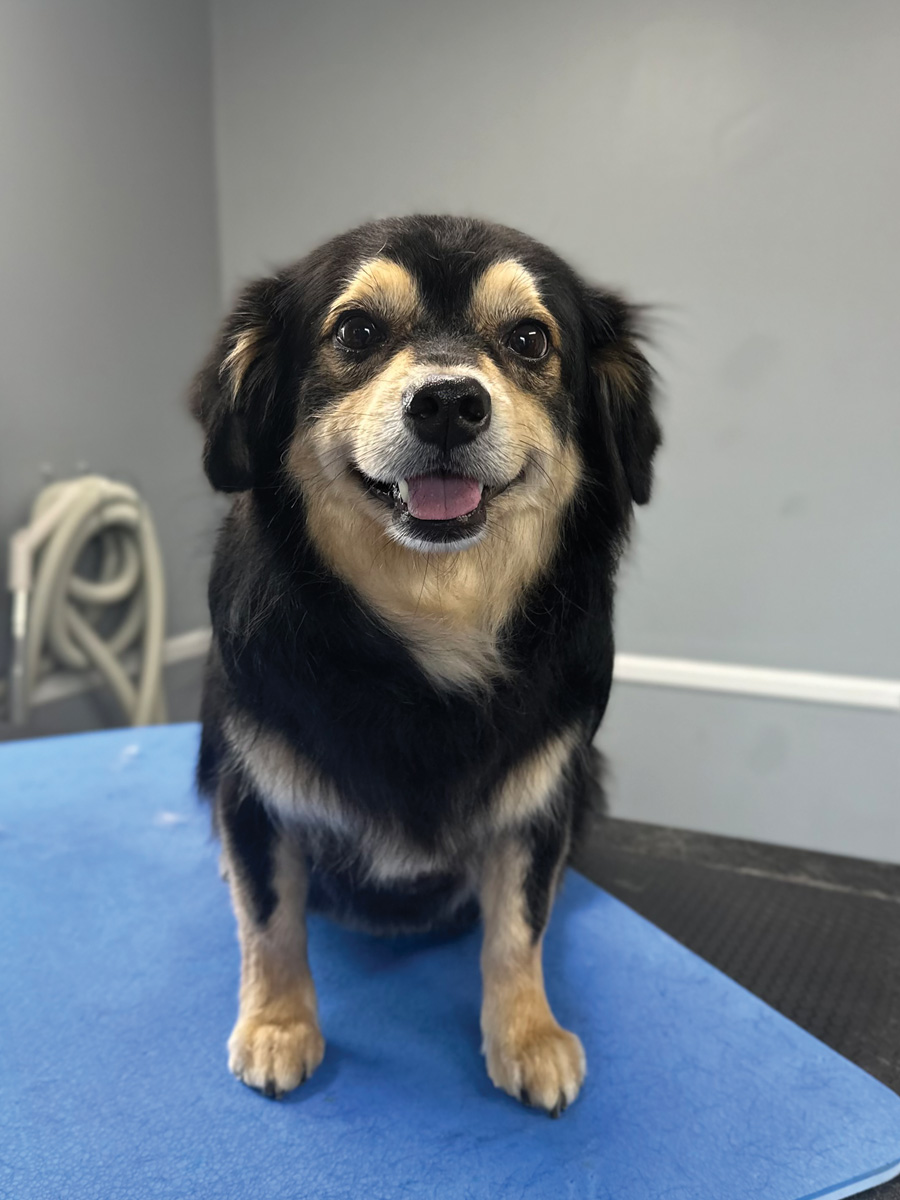

 popular belief amongst pet owners of flat-coated dogs with undercoat and furnishings is that these pets just need a bath and brush-out. But as professional pet groomers, we know how much care all coat types need, regardless of the owner’s trimming preference. And once you master this coat type, it is something you can really “wow” your clients with!
popular belief amongst pet owners of flat-coated dogs with undercoat and furnishings is that these pets just need a bath and brush-out. But as professional pet groomers, we know how much care all coat types need, regardless of the owner’s trimming preference. And once you master this coat type, it is something you can really “wow” your clients with!
This trim was done on a medium-coated mutt whose owner likes to keep him as natural-looking as possible, but still easy to maintain.
Fig 2) Remove severe matting before the bath.
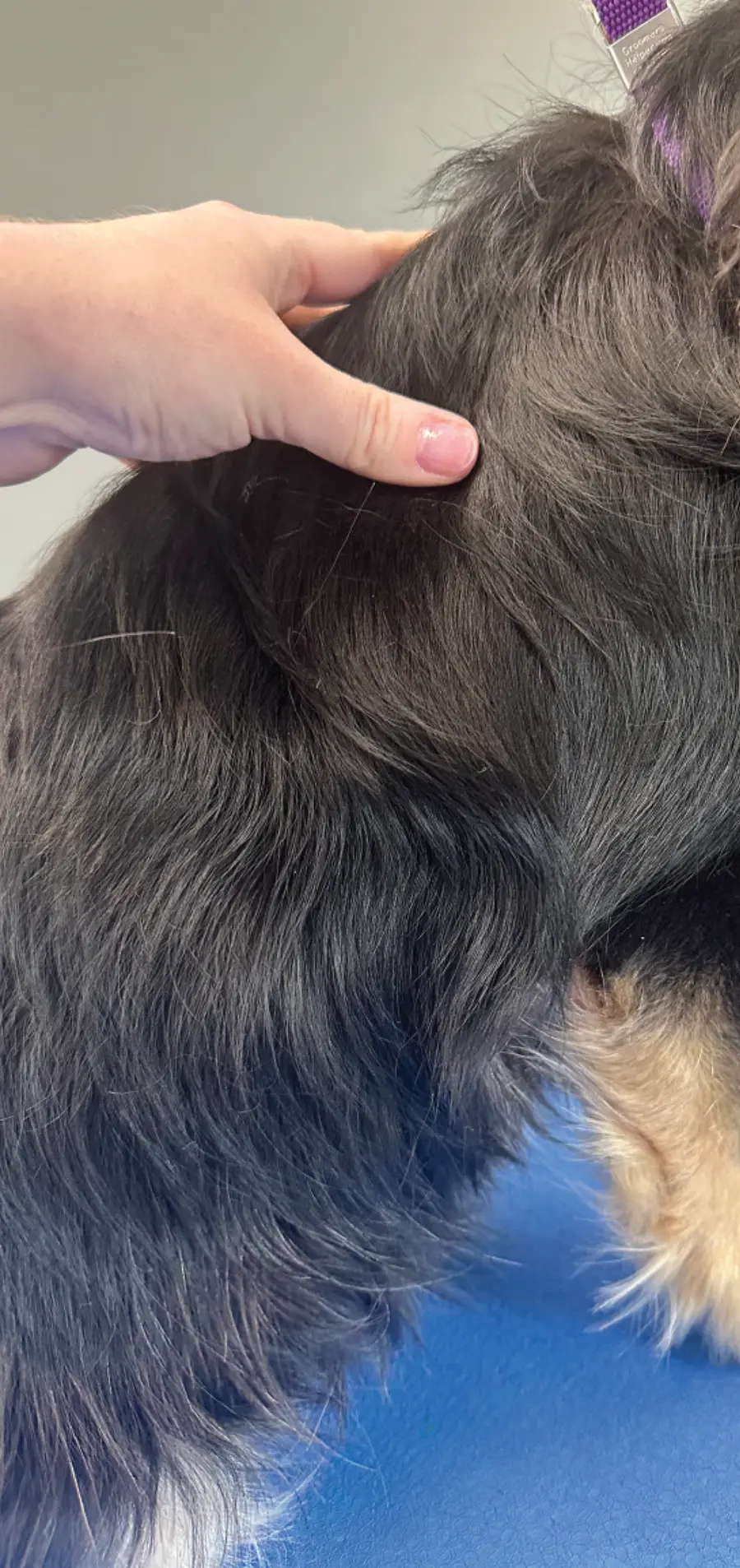
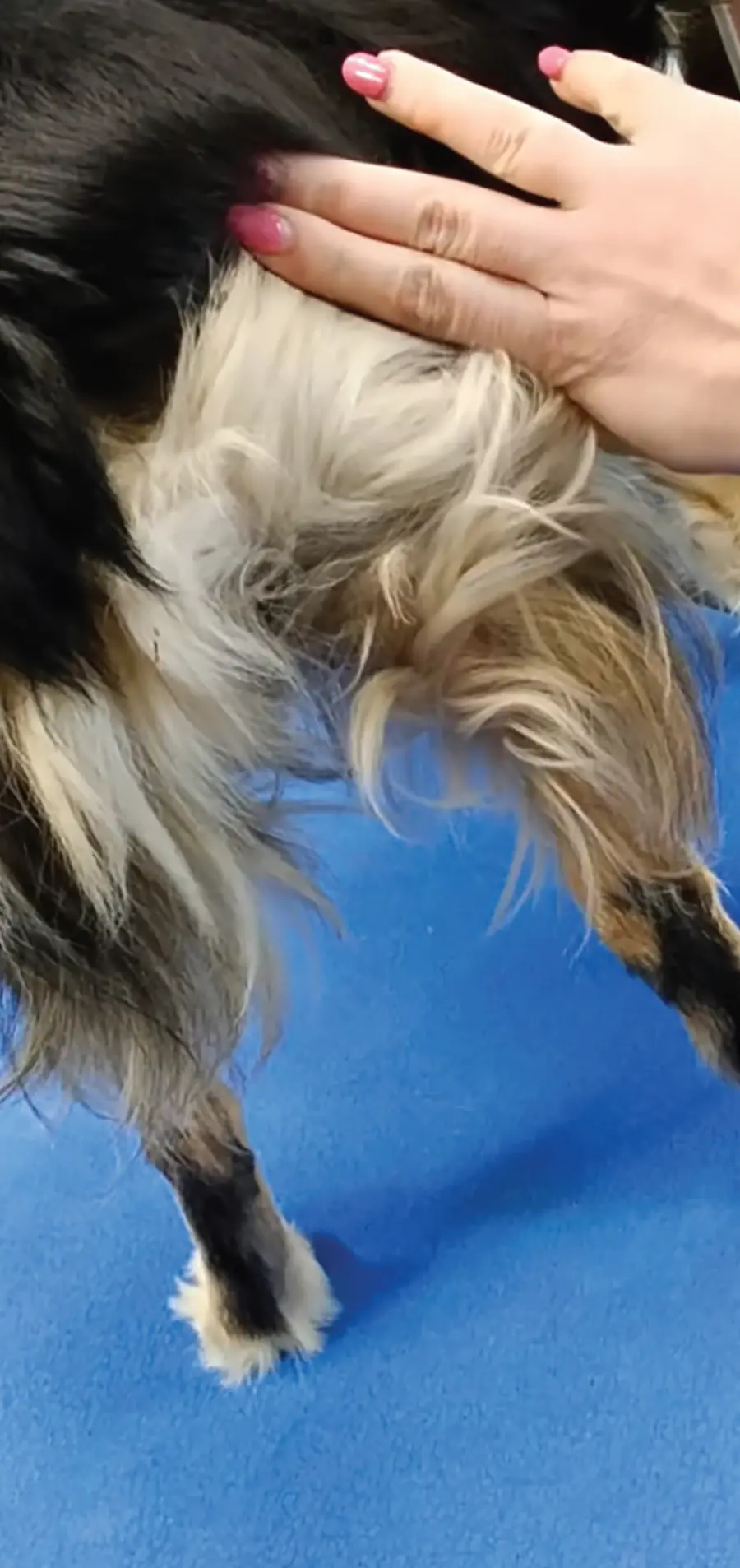









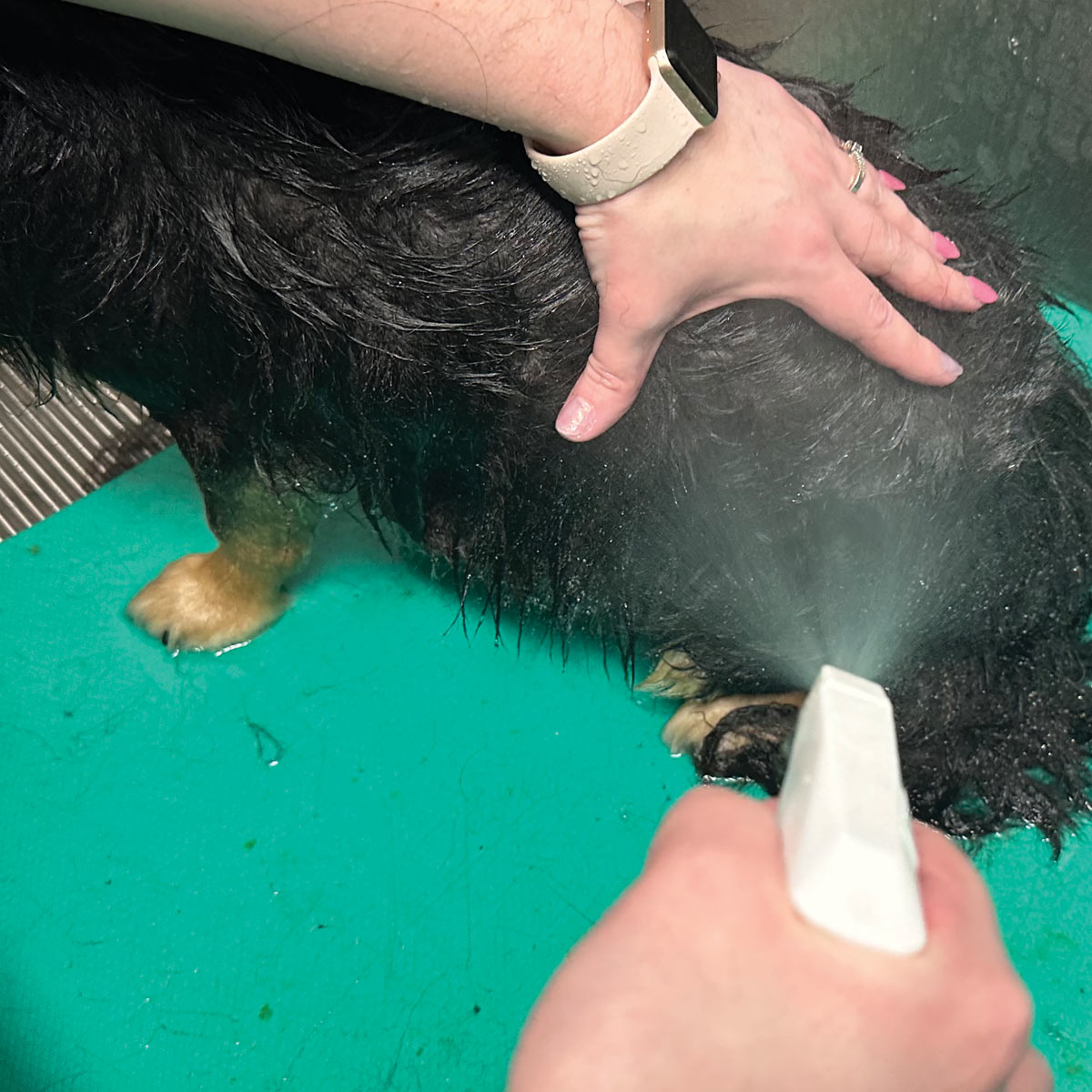
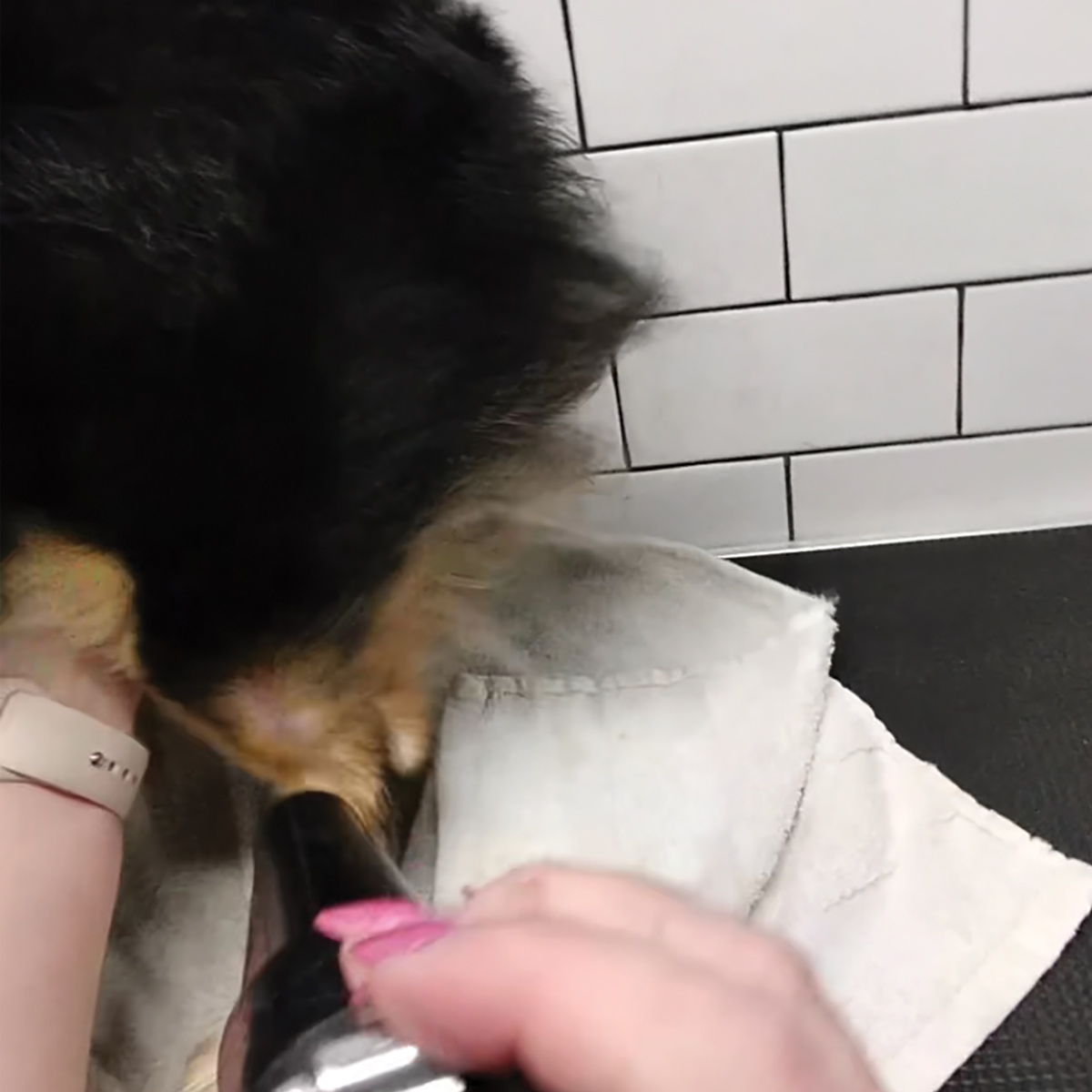


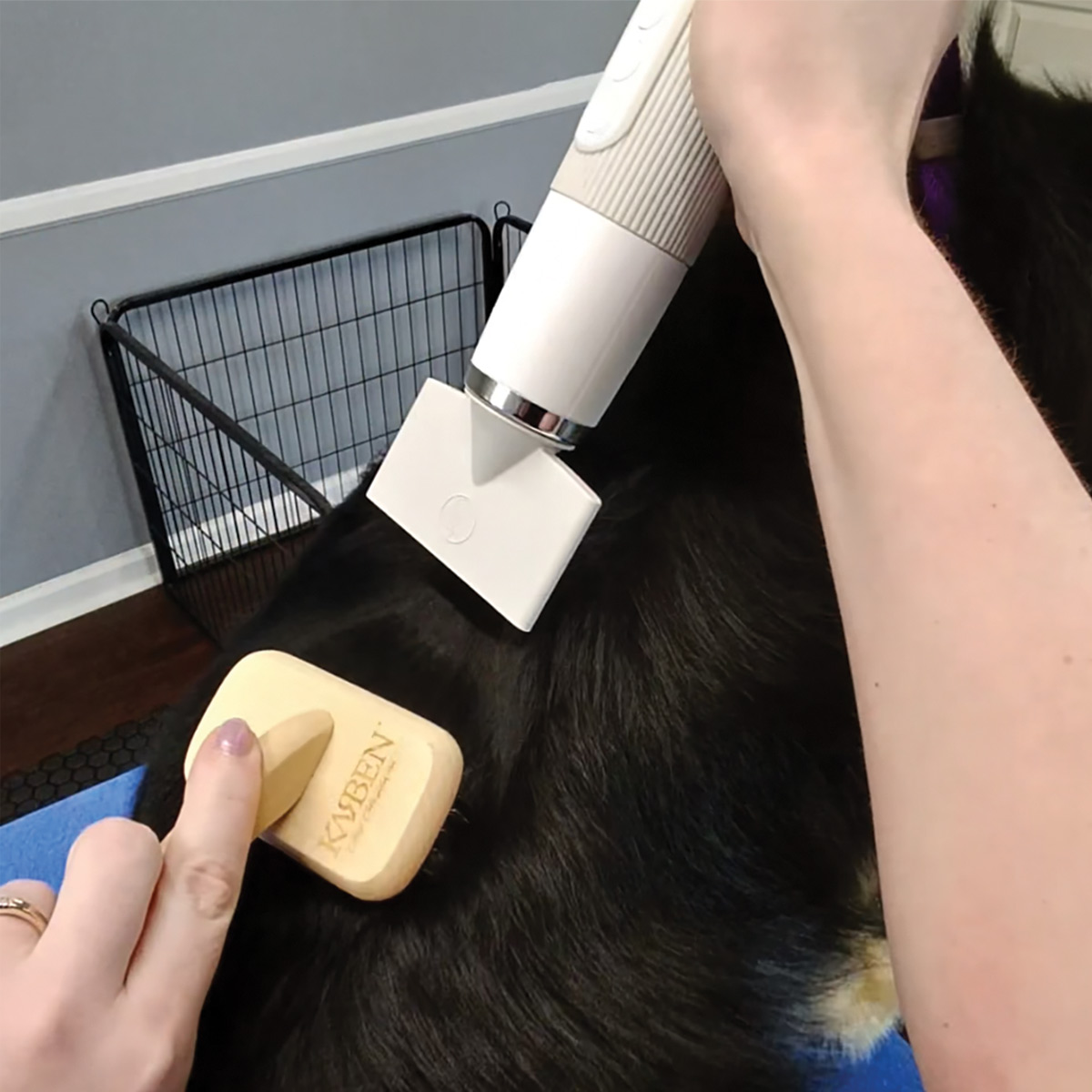




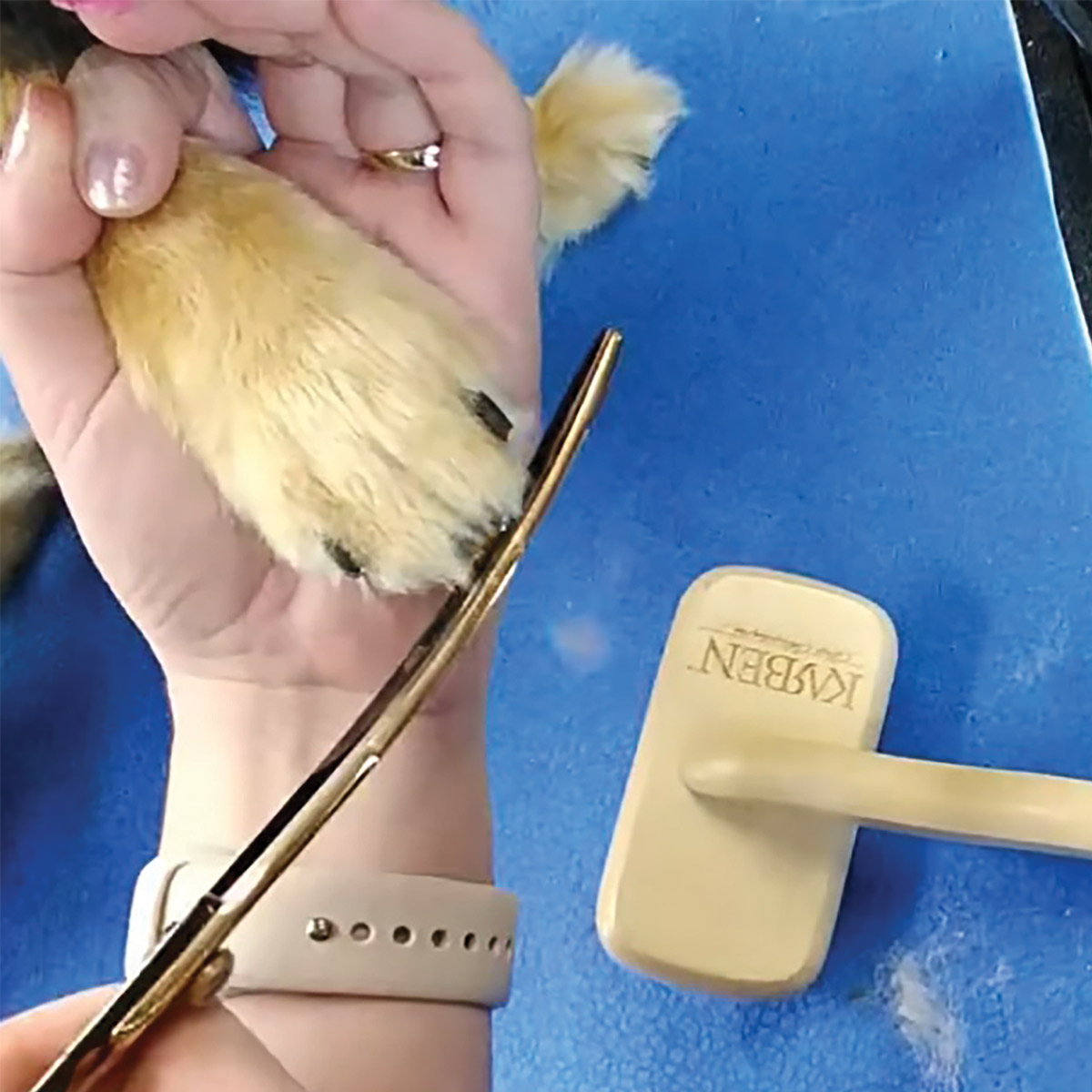


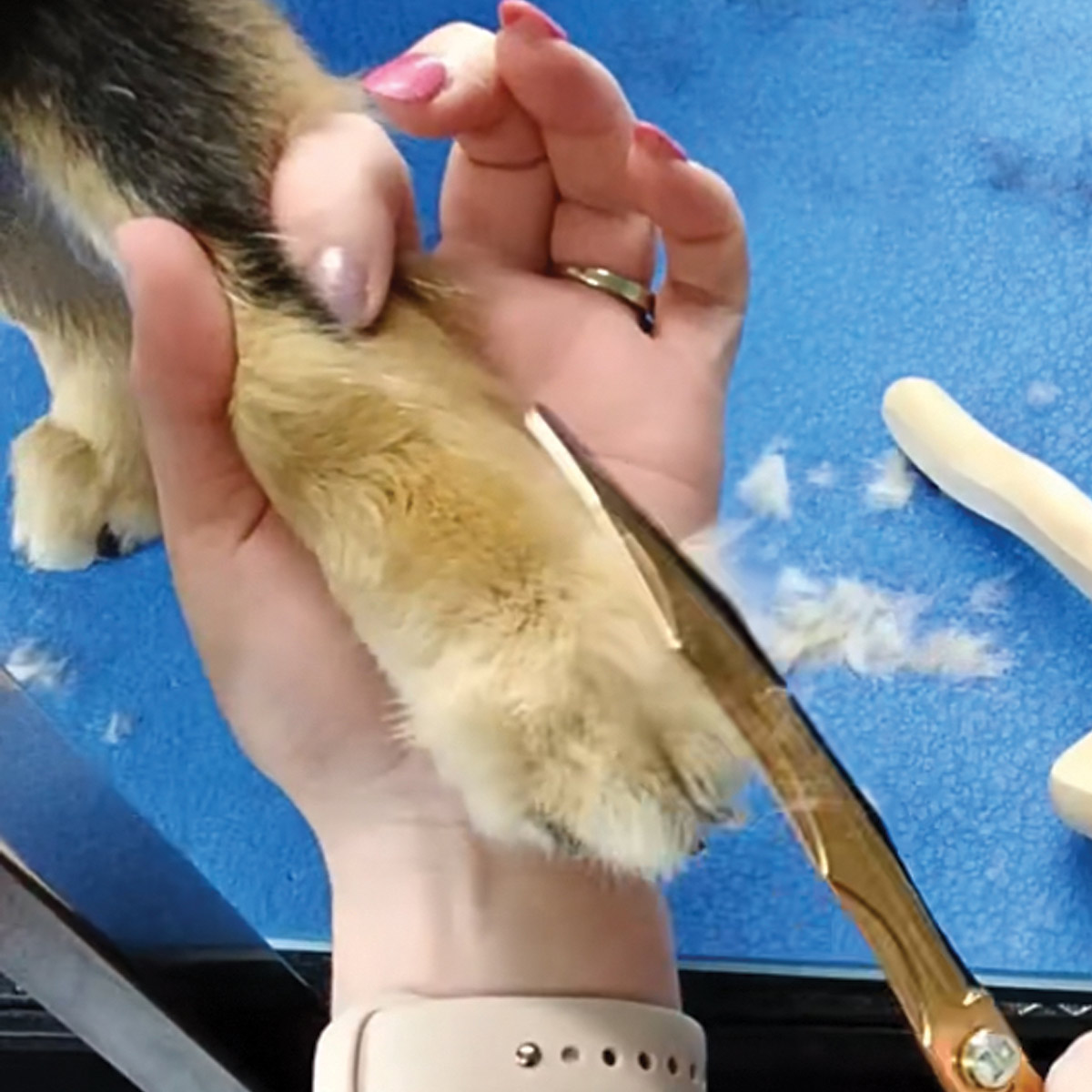
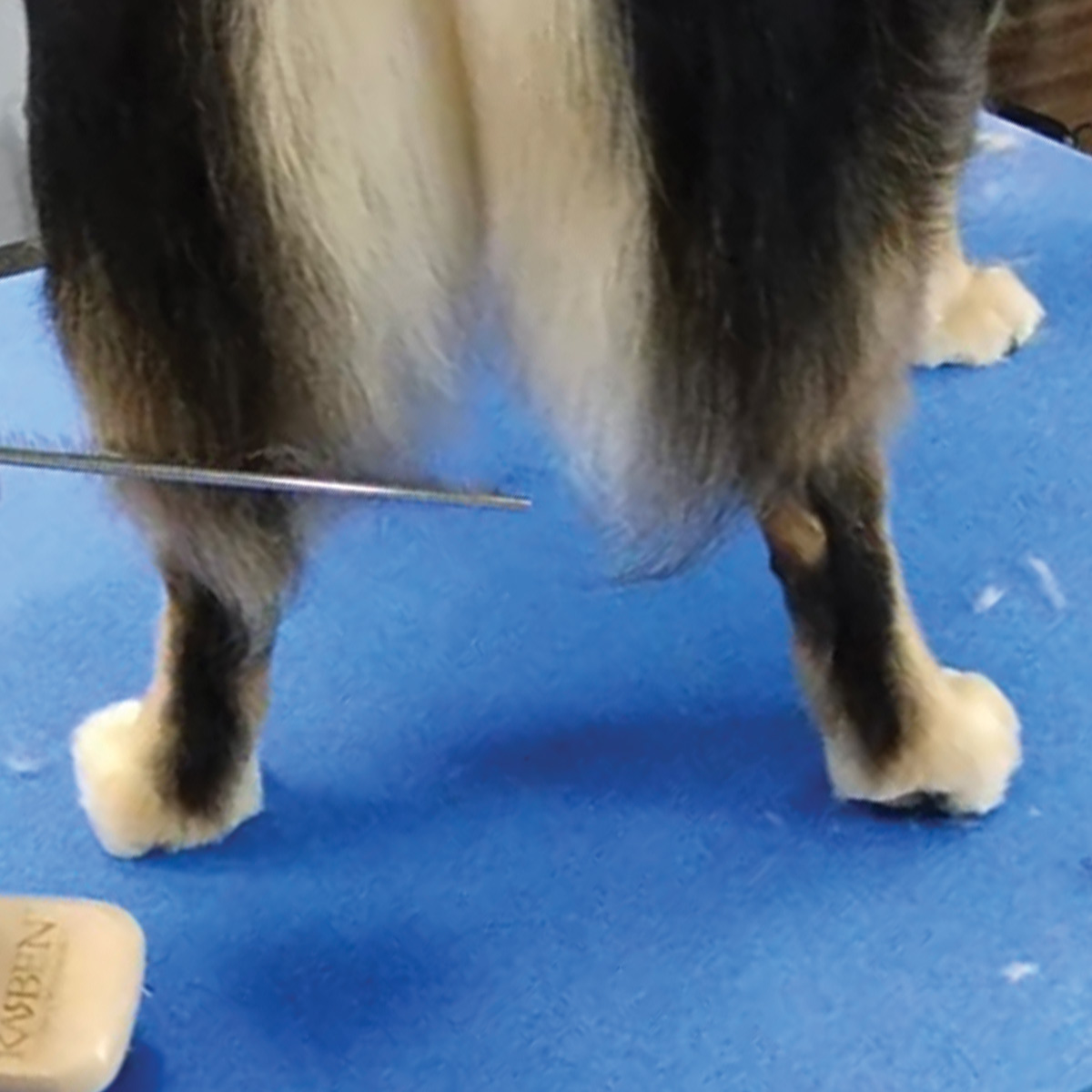


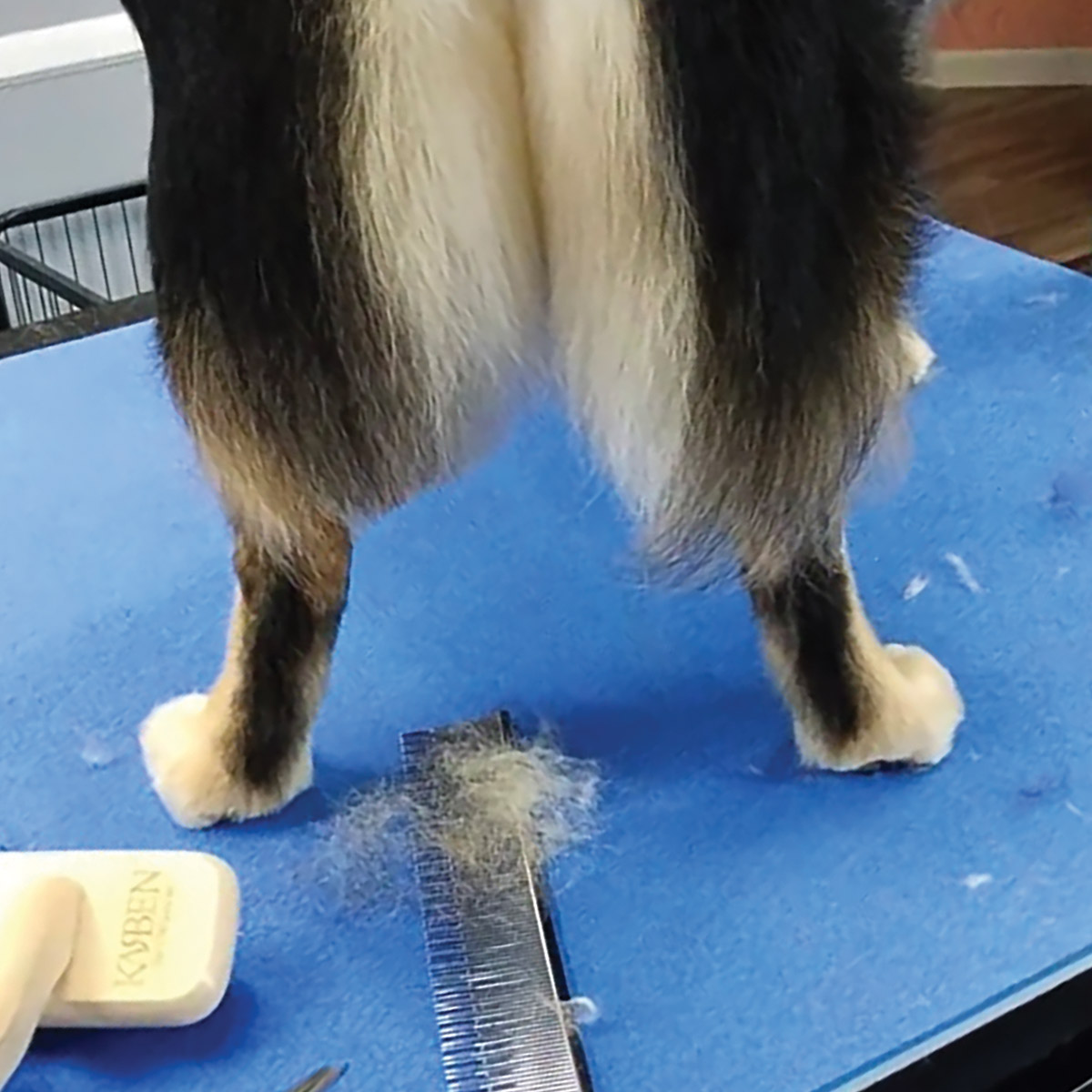
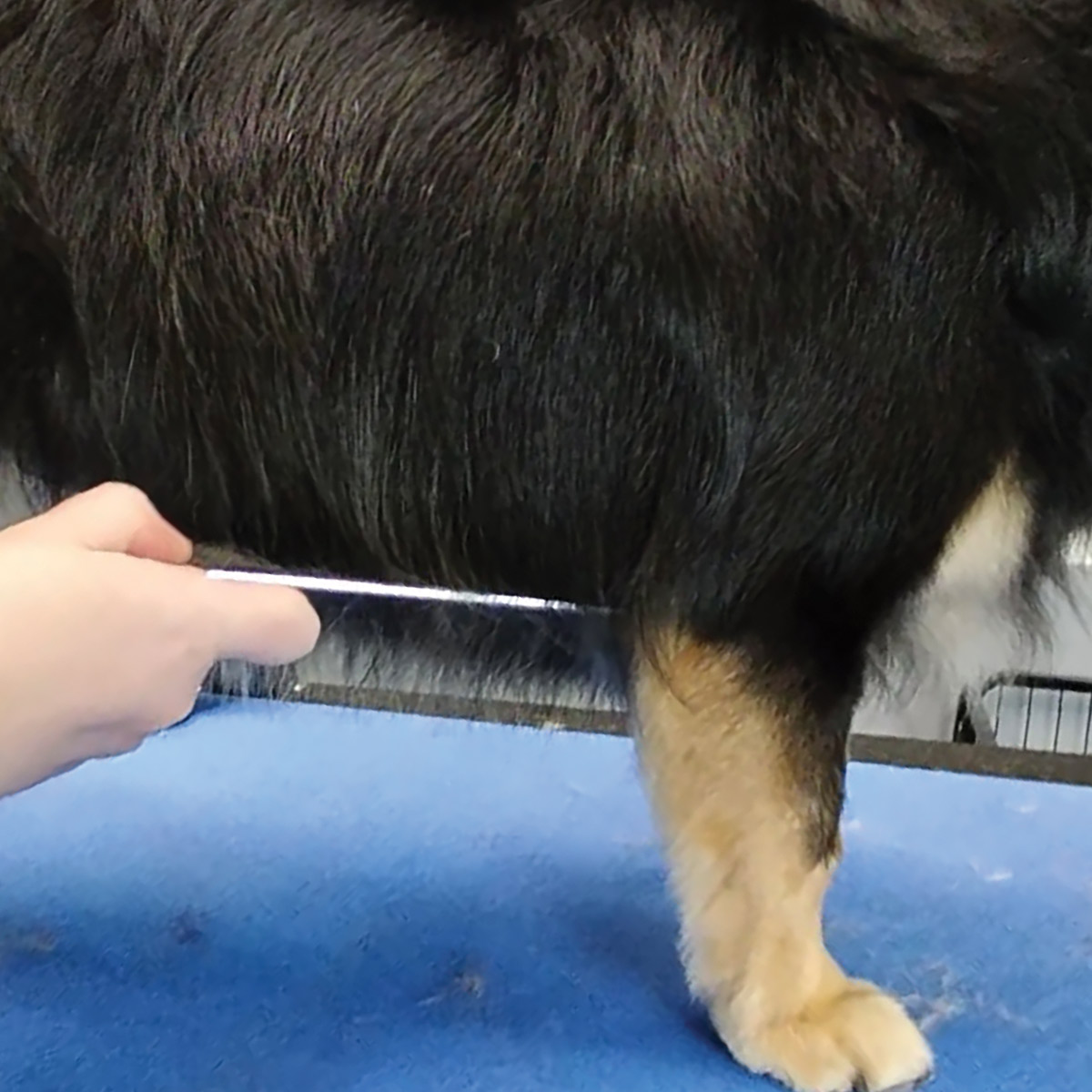


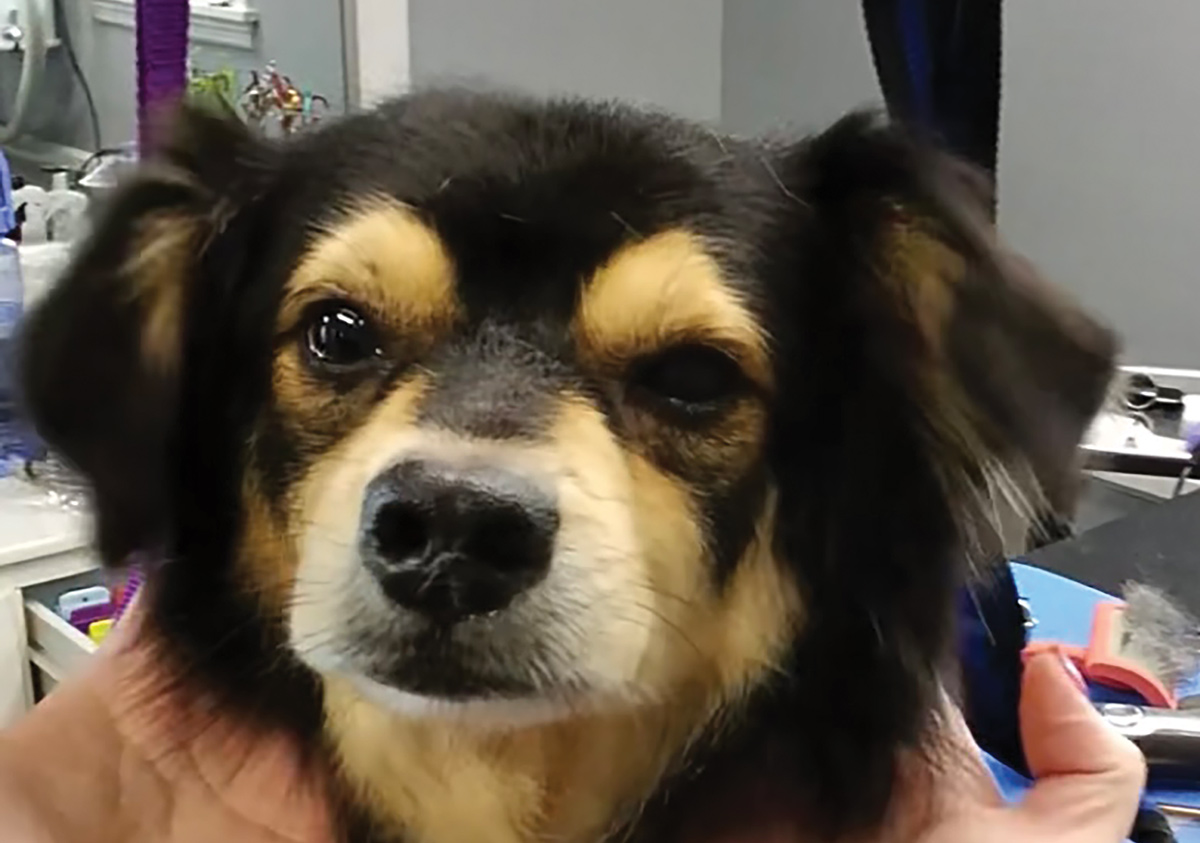
These types of dogs can be so satisfying to work with because they look as if their hair just grows that way! But as groomers, we know that there is a lot more that goes into it. By adding these extra steps, we can take this service from “just a bath and brush” to a beautiful, natural full groom!